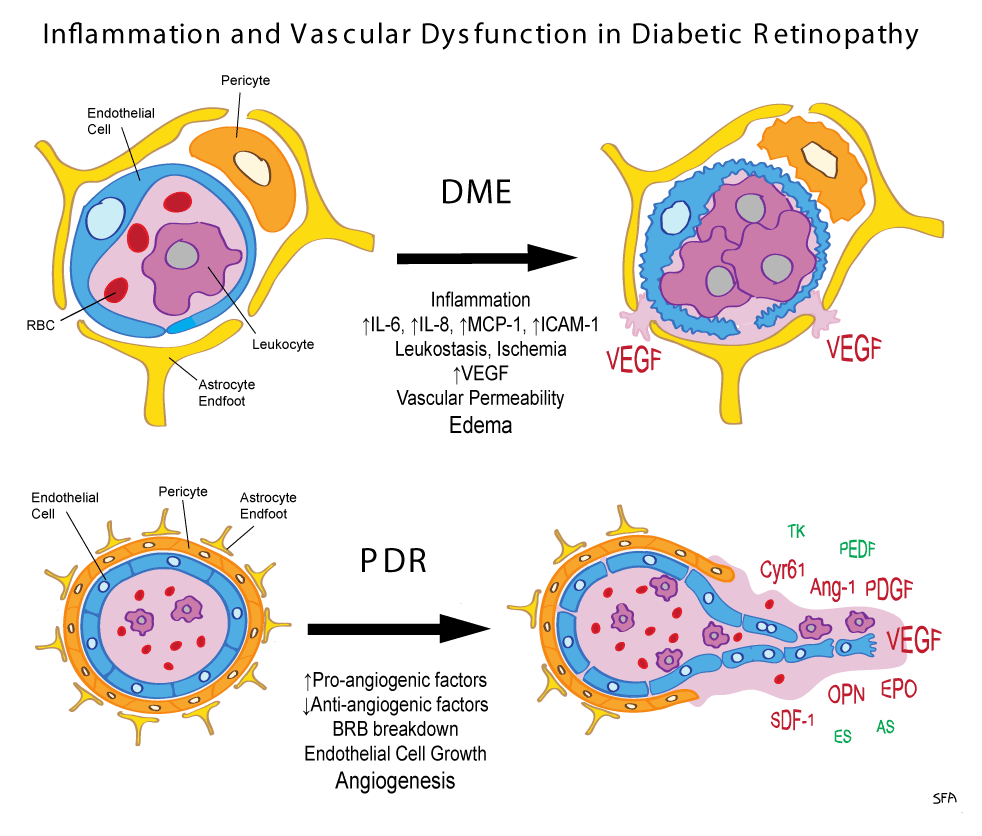
In diabetic macular edema (DME), neuroinflammation with upregulated expression of cytokines such as interleukin-6 (IL-6), IL-8 (CXCL8) and monocyte chemoattractant 1 (MCP-1, CCL2), as well as intercellular adhesion molecule 1 (ICAM-1) on the luminal surface on endothelial cells leads to increased adherence of leukocytes to the luminal endothelial surface (leukostasis). This can block blood flow and damage endothelial cells. Capillary obstruction due to leukostasis and capillary dropout due to death of vascular pericytes and endothelial cells leads to tissue ischemia. Resulting hypoxia may drive expression of vascular endothelial growth factor (VEGF). VEGF promotes vascular permeability resulting in leakage plasma through the blood-retinal barrier (BRB) and tissue edema. In proliferative diabetic retinopathy (PDR) upregulated expression of pro-angiogenic factors and down regulation of anti-angiogenic factors leads to an imbalance that causes BRB disruption and unproductive angiogenesis. Pro-angiogenic factors include VEGF, angiopoietin-2 (Ang-2), osteopontin (OPN), platelet-derived.